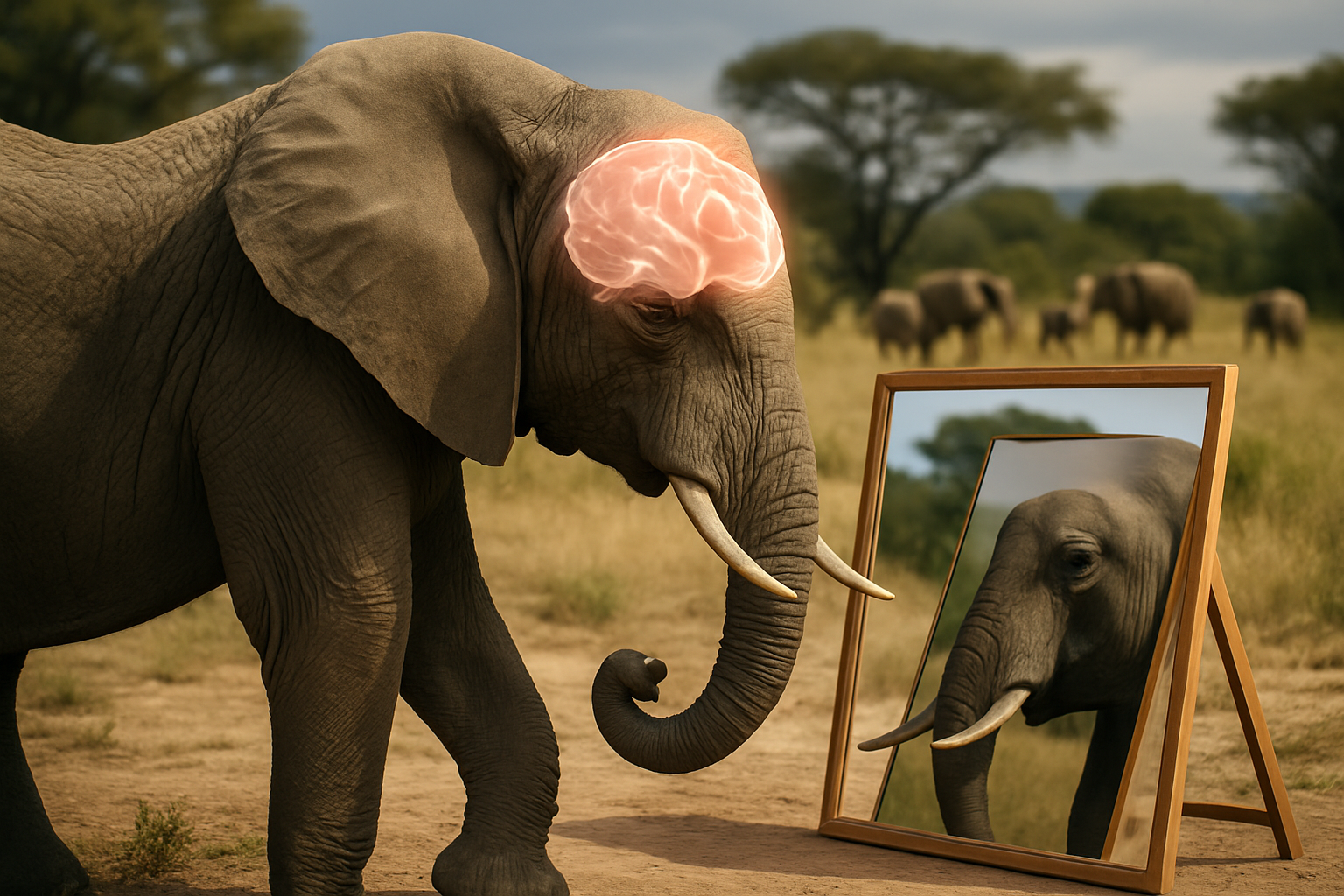Unraveling the Enigma of Elephant Cognition
Elephants, renowned for their intelligence and emotional depth, continue to astound researchers with their cognitive abilities. This article delves into the fascinating world of elephant cognition, exploring recent discoveries that shed light on their problem-solving skills, self-awareness, and complex social behaviors. From tool use to empathy, we'll uncover the remarkable mental capacities of these gentle giants and their implications for conservation efforts.

The Evolution of Elephant Intelligence
Elephant cognition has evolved over millions of years, shaped by the complex social and environmental challenges they face. The ancestors of modern elephants, Proboscideans, first appeared around 60 million years ago. As these early trunk-bearing mammals adapted to diverse habitats, their brains grew larger and more sophisticated.
The modern elephant brain is remarkably similar to the human brain in terms of structure and complexity. It boasts a large cerebral cortex, which is associated with higher-order thinking and decision-making. This neural architecture has allowed elephants to develop a range of cognitive abilities that help them navigate their intricate social world and challenging environments.
Problem-Solving and Tool Use
One of the most striking aspects of elephant cognition is their problem-solving ability. Researchers have observed elephants using tools in various contexts, demonstrating a level of creativity and ingenuity previously thought to be limited to primates.
In Thailand, for instance, elephants have been observed using branches to swat away flies, essentially creating their own fly swatters. More impressively, some elephants have been seen breaking branches into smaller pieces to create tools better suited for specific tasks, showing an understanding of cause and effect.
In controlled experiments, elephants have shown remarkable problem-solving skills. They can use boxes as stepping stools to reach food, understand the concept of teamwork to pull ropes simultaneously, and even use their trunks as snorkels when swimming underwater.
Self-Awareness and Mirror Recognition
Perhaps one of the most intriguing aspects of elephant cognition is their apparent self-awareness. The mirror self-recognition test, long considered a benchmark for self-awareness in animals, has yielded positive results with elephants.
In these tests, elephants have been observed touching marks placed on their bodies that are only visible in a mirror, suggesting they understand the reflection as an image of themselves. This ability has only been demonstrated in a handful of species, including great apes, dolphins, and magpies.
This self-awareness extends beyond mirror recognition. Elephants have been observed covering their tracks to avoid detection by predators or humans, suggesting a level of metacognition – the ability to think about one’s own thoughts and actions.
Emotional Intelligence and Empathy
Elephants are renowned for their emotional depth and empathetic behavior. They form strong, lifelong bonds within their herds and have been observed mourning their dead, a behavior rarely seen in the animal kingdom.
Research has shown that elephants can recognize and respond to the emotional states of their herd members. They offer comfort to distressed individuals through physical contact and vocalizations, demonstrating a sophisticated understanding of others’ feelings.
This emotional intelligence extends to interspecies empathy as well. There have been numerous accounts of elephants helping other animals in distress, including instances of elephants attempting to assist injured humans.
Social Cognition and Communication
Elephant herds are complex social structures, requiring advanced cognitive abilities to navigate. Elephants can recognize over 100 different individuals and maintain intricate social networks that span generations.
Their communication skills are equally impressive. Elephants use a variety of vocalizations, including low-frequency rumbles that can travel for miles through the ground. They also employ a range of visual signals and tactile communications, showcasing a multifaceted language system.
Recent studies have even suggested that elephants may have a rudimentary understanding of pointing gestures, a skill previously thought to be unique to humans and some domesticated animals.
Implications for Conservation
Understanding elephant cognition is not merely an academic pursuit; it has significant implications for conservation efforts. As we uncover more about their intelligence and emotional lives, it becomes increasingly clear that traditional conservation methods may not be sufficient.
Elephant cognition research has led to the development of more humane management practices in captive settings and informed strategies for mitigating human-elephant conflict in the wild. For instance, understanding their problem-solving abilities has helped conservationists design more effective deterrents to keep elephants away from crops.
Moreover, recognizing the depth of elephant intelligence and emotional capacity has bolstered arguments for stronger protection measures and the phasing out of practices that exploit these magnificent creatures, such as their use in entertainment industries.
The study of elephant cognition continues to challenge our perceptions of animal intelligence and consciousness. As we unravel more of this enigma, we not only gain insight into the minds of these remarkable creatures but also deepen our understanding of the evolution of intelligence itself. The cognitive abilities of elephants serve as a powerful reminder of the complex inner lives of animals and our responsibility to protect and respect the diverse intelligences that inhabit our planet.





